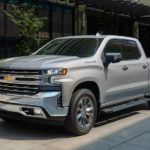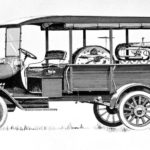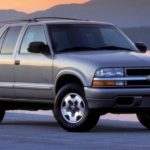Supply and demand are the basis of consumerism, but what happens when that supply is deficient? Over the last few years, we’ve seen this firsthand, but it’s not a new concept. Many people are willing to pay more for something if there are limited quantities or if it’s unique or exclusive. Online retailers capitalize on this with digital product countdowns that tell us “Only a few items left in stock” to encourage a quick sale. In the car industry, this exclusivity reaches beyond any trip to your local Chevy truck dealer. How so?
Genuine exclusivity, the kind of collectors and car enthusiasts, requires diving deeper into history beyond the rising demand for new models. Instead, it forces us to search for incredibly rare models that hold special meaning or incredible value because they were offered in limited numbers or for a brief period. In Chevrolet’s history, there are many examples of these collectors’ items, many that inspire and others that leave little question why they didn’t find a more permanent place in the Chevy lineup.
The 1958 Chevy Cameo
Chevrolet introduced drivers to a new style of truck in the 1950s with the debut of its Task Force lineup. Unlike previous models, the Task Force trucks offered more luxurious amenities, making it feel more like a car and less like a utilitarian workhorse. These models came with V8 powertrains, two-tone exteriors, and wrap-around windshields, but none of these features compared to the iconic Cameo package.
The Cameo exuded luxury, transforming the truck into a stylish chariot by adding a fleetside bed, an uncommon feature at the time. The early Cameo models, which debuted in 1955, were nothing more than an aesthetic package that added fiberglass skins to the sides and tailgate of the pickup truck to make it more appealing. By 1958, Chevrolet was ready to capitalize on the Cameo’s success and had its replacement ready, marking the final year for the iconic model with its fiberglass body.
The 1975 Chevy C10 Big 10
There’s always been a struggle between automakers and emissions regulations because it limits how much an automaker can do with their vehicles in terms of performance and capability. The 1975 Chevy C10 Big 10 embodies this struggle and Chevrolet’s efforts to sidestep the rules. How so?
In 1975, vehicles weighing under 6,000 lbs had to abide by the emissions regulations. Chevrolet skirted the rules by adding to the half-ton C10’s weight. In doing so, Chevrolet marketed the C10 Big 10 as a heavy-duty truck, with its curb weight measuring anywhere from 6,050 to 6,200 lbs. The C10’s new classification made history, especially when equipped with Chevy’s big-block V8 engine, which made it capable enough to keep up with speed demons like the Corvette.
The 1976 Chevy Blazer Chalet
The rising popularity of off-roading and venturing beyond the pavement has prompted automakers to respond with adventurous trucks and SUVs that offer enough versatility to accommodate your weekday commute and chase the horizon on the weekend. We see this in models like the Ford Bronco and the Silverado ZR2, but it’s not a new concept for the Chevy lineup. There’s always been a niche for adventurous rigs; only the size of the market has determined how much we see of those models.
The 1976 Chevy Blazer Chalet is an excellent example of this and is a rare find because only 1,800 models were built from 1976 to 1977. The Blazer Chalet was a collaboration between Chevrolet and Chinook Mobilodge Inc. to design a versatile SUV that doubled as a mobile adventurer. The rear camper on the Chalet was permanently fixed but opened into the Blazer’s cab so that passengers could easily access the sleeping quarters. In addition, with the Chalet’s roof extended, the camper could accommodate multiple beds.
The Chalet’s versatility and off-road prowess make it a modern marvel by today’s standards. Even then, the Chalet was impressive and came standard with four-wheel drive, and Chevrolet’s proven 5.7L V8 engine. With limited production, it’s easy to see why the Chalet is a great find for collectors.
The 1984 Chevy K10 Sno Chaser
Chevrolet is renowned for how attuned it is to drivers’ needs, and models like the 1984 K10 Sno Chaser prove this isn’t anything new. In the 1980s, Chevrolet was well-aware that drivers in Rust Belt states (Wisconsin, West Virginia, Pennsylvania, Ohio, New York, Missouri, Michigan, Illinois, and Indiana) struggled throughout the winter. They needed reliable options that could handle the winter season with the influx of ice and snow.
Chevrolet came up with a solution, the 1984 K10 Sno Chaser. Only available with four-wheel drive, the Sno Chaser was designed to mimic the Chevy K1500 with a shorter box. To keep production costs low, the Sno Chaser was only available in red with gold stripes and a blacked-out bottom, which hid the rocker guard that protected the truck’s underbody from corrosion caused by road salt. Beyond its distinct color palette, the Sno Chaser was also instantly recognizable by its spoiler, a flying bridge design that swept over the truck bed along the rear of the cab.
The 1990 Chevy 454 SS
The 1990 Chevy 454 SS proves that looks can be deceiving, especially by modern standards. With the current automotive landscape inundated with power-hungry behemoths like the Ford Raptor, models like the Chevy 454 SS are a throwback to a different era. Today, factory-built performance trucks are plentiful, but in the 1990s, it was practically unheard of, making the Chevy 454 SS even more of a collector’s dream.
Chevrolet took the full-size C1500 and did everything possible to lighten the truck, opting for a short box and a single cab with two-wheel drive. The streamlined design laid the groundwork for other performance-oriented components, like the front sway bar and Bilstein shocks. From there, Chevy added the biggest engine available–its 454-cubic inch V8 that delivered 230 hp and 385 lb-ft of torque. While this may not seem like much today, the 454 SS had a greater torque output than the 1990 Camaro, with its small-block engine delivering 345 lb-ft of torque. The difference was astounding and pushed the 454 SS speed demon to a launch from 0 to 60 mph in under eight seconds.
The 1997 Chevy S10 EV
General Motors is building a greener future by transitioning its gas and diesel-powered lineups to hybrid and all-electric models like the Silverado EV. While these new models are exciting, the electric vehicle isn’t a new invention. EVs were introduced decades ago, but the timing was never right, as electric powertrains proved far too impractical. This is partly what happened to the Chevy S10 EV, the world’s first factory-produced electric truck.
Designed as a fleet vehicle, the S10 EV was built on the S10 platform with a regular cab and short box. Instead of one of Chevy’s proven internal combustion engines, it relied on an 85-kW liquid-cooled AC induction motor and a lead acid battery pack. Its top speed was governed at 70 mph, and its estimated driving range was 118 MPGe, limiting its capability and appeal. As a result, Chevy only sold 60 of the 482 models, many of which went to the United States Air Force and various utility companies across the country.
The Power of Exclusivity
Which model is your favorite? While these Chevy trucks were short-lived, they are a part of America’s rich automotive history because they showcase the evolution of the modern workhorse into how we know it today. They also are exceptional examples of how Chevrolet is constantly looking for ways to evolve its lineup to meet and exceed the needs and expectations of drivers.




